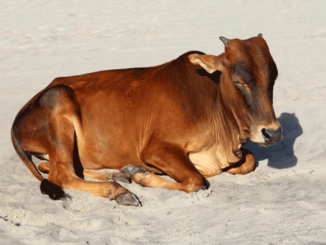Abstract: we all know what an insect is but insects can be used as a meal for poultry or the other animals that is the new thing to us. Insects are the source of protein. In the absence of conventional source of protein, this unconventional feed source can be used. The main motive of this study is to know what insect meal is and how it is made and the future scope the meal.
Keywords: insect meal, black soldier, INSECTFii
Introduction: Insects are an extremely highly underutilized, yet it is very efficient and low environmental impact animal source which is being explored by industrialized world. Now-a-days insect farming become part of routine activities in many countries as well as India. In South-east Asia, farmed insects are used after processing and then sold locally or exported. In many regions, where food is not available, there insect meal is consumed to support the larger vertebrate livestock.
Objectives/ advantages: The main objectives of using insect meal as unconventional feed source are:
- It has high feed conversion efficiency.
- This one is eco- friendly and nutritious feed source to the livestock and poultry.
- It is used as replaced feed where cost of conventional feed sources like fish meal and soya meal are high and their availability is limited.
- It is rich in protein and amino acid. it is very economical. Farmers can use kitchen wastages for producing insect production. Thus poor farmer can engaged themselves in insect farming.
What is unconventional feed?
Unconventional feed are those feed sources which are traditionally not used for feeding of animals. Their use in livestock ration is increasing day by day due to shortage of animal feeds. The main source of such feed is agricultural and forest by–products
Insect meal
Unlike the other unconventional feed insects are also used as unconventional feed sources. Insects are being used as an alternative protein source for poultry and aqua industries. Mainly insect meal is being used for poultry industries. Insects are either fed as whole or as a processed feed such as in powdery form or dried or fresh form.
Preparation of Insect meal
Insects are good sources of sustainable alternative protein. Protein and fat is extracted from insects and then processing is all done. Ex- INSECTFii, a company piloting in India uses Black Soldier fly larva for insect meal production for its short life cycle and ability to produce a lot of eggs.
Insects can feed on left-over food, grains, discarded by distilleries or even manure
![]()
Insects’ growth on the wastages
![]()
They lay eggs
![]()
Eggs are developed into larvae. Some of them are allowed to developed to grow into adult insects to lay more eggs
![]()
Separating the larva from the residue
![]()
Pressing: Oil [insect oil could replace fish oil or soya oil in animal feed]
Drying: Meal [insect meal replace soya meal or fish meal]
![]()
Used as feed source
Various insect species used as insect meal
|
Insect |
source | CP (%) |
Remarks |
| Black Soldier fly | Found in cattle and poultry manure | 41-44% | It is rich in calcium and phosphorus |
| House fly( Musca domestica) | Found in cattle and poultry manure | 64% | Rich in unsaturated fatty acids like arginine, lysine, valine |
| Earth worm | Natural feed source for poultry | 63% |
It is economical and good sources of protein |
| Locust | Harvested on organic waste | 52% | It is more palatable. |
Disadvantages of insect meal
Out of 1300 countries, across 71 countries believed that more information should be available on the use of insects as a food source for both animals and humans. But there are some major issues with this insect meal. Insect nutrients on the health of piglets still need to be further investigated.
The problems are
- Legislative and regulatory problems:
The use of the insect protein (fat extracted) in animal feed is still prohibited due to different feed safety and quality laws, for example the TSE regulation. Attention will also need to be paid to legislation covering the safe use of substrates, such as vegetable and domestic waste and manure, on which insects can be reared most economically.
- Further upscaling needed
For example, when insects would replace 5% of the feed for broilers in the Netherlands, then an amount of about 75,000 tonnes of insects would be needed. A viable production unit of insects can supply about 1 tonne per day. For this production volume about 200 of small scale insects companies would be needed. For large-scale application, therefore further upscaling is a must.
- Expensive processing method
Larvae are needed to be further processed to get them into a form in which they are usable in the feed industry. Shelf life in increased significantly by methods which are very expensive.
- Animal welfare for insects
Animal welfare issues are also relevant to insect rearing facilities. Insects should be farmed with no pain, injury and diseases.
What needs to be done
- Cost price reduction
- Increase feed efficiency
- Decrease processing cost
- Reduction of housing cost.
Conclusion
In every process, there will be some merits and demerits. Although having all above mentioned disadvantages, insect meal has high nutritive value and these are potential feed sources in poultry industry. Insect farming is a good start up for entrepreneur. It also improves livestock health and supports the livelihood of small farmers.
Reference
- ABN AMRO 2016. Insectenkweek: kleine sector, Grote kansen. [Accessed 2019 Sept 18]. https://www.bom.nl/uploads/content/file/Insectenkweek-def_1565254395.pdf [Google Scholar]
- Alltech 2019. Global feed survey. [Accessed 2019 Nov 20]. https://www.alltech.com/feed-survey [Google Scholar]






1 Trackback / Pingback